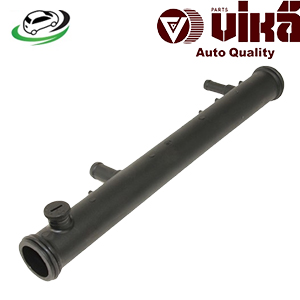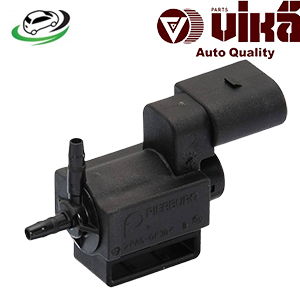-5%
Get AUDI 4M Q7/ 4M Q8/ 8J TTRS/ A3 8P/ B6 A4/ B7 RS4/ B8 A4 / VW Beetle/CC/EOS/Golf V/Passat B6/Tiguan 1/2 Solenoid Valve 037906283C
A solenoid valve is an electromechanical device that controls the flow of fluids or gases within a system by opening or closing in response to an electrical signal. They play a critical role in various applications, ranging from industrial automation and HVAC systems to automotive and medical equipment. This guide provides an in-depth look at solenoid valves, covering their types, components, working principles, applications, advantages, and maintenance.
1. Understanding Solenoid Valves
What is a Solenoid Valve?
A solenoid valve consists of a valve body, a solenoid coil, and a plunger or armature. When electrical current passes through the coil, it generates a magnetic field that moves the plunger, either opening or closing the valve. This action enables the solenoid valve to regulate the flow of fluids or gases based on external commands.
Key Components of a Solenoid Valve:
- Valve Body: The main structure that houses the internal components and connects to the piping system.
- Solenoid Coil: An electromagnetic coil that generates a magnetic field when energized.
- Plunger or Armature: A movable core that shifts in response to the magnetic field, either opening or closing the valve.
- Spring: Often used to return the plunger to its default position when the coil is de-energized.
- Seals and O-rings: Ensure leak-proof operation by preventing fluid from escaping the valve body.
2. Types of Solenoid Valves
Solenoid valves are categorized based on various factors, including their design, operation, and applications. Here are the most common types:
1. Direct Acting Solenoid Valves:
- Operation: These valves operate directly from the solenoid coil without requiring additional pressure. They are suitable for low-pressure applications and small flow rates.
- Applications: Often used in home appliances, irrigation systems, and small pneumatic systems.
2. Pilot Operated Solenoid Valves:
- Operation: These valves require an initial flow of fluid to operate. The solenoid opens a small pilot port, which allows fluid pressure to move the main valve.
- Applications: Commonly used in industrial applications, hydraulic systems, and larger flow systems.
3. Two-Way Solenoid Valves:
- Operation: These valves have two ports: one for the inlet and one for the outlet. They can either open or close the flow path.
- Applications: Frequently used in shut-off applications and flow control.
4. Three-Way Solenoid Valves:
- Operation: These valves have three ports and can either divert flow between two outlets or mix flow from two inlets.
- Applications: Used in HVAC systems, hydraulic systems, and fluid control applications.
5. Normally Closed (NC) and Normally Open (NO) Solenoid Valves:
- Normally Closed (NC): These valves remain closed when de-energized and open when energized. They are ideal for applications requiring fail-safe operations.
- Normally Open (NO): These valves remain open when de-energized and close when energized. They are often used in systems that require fluid flow when power is off.
3. Working Principle of Solenoid Valves
The operation of a solenoid valve is straightforward yet effective. Here’s a breakdown of how it works:
- Powering the Coil: When the solenoid coil is energized by an electrical signal, it generates a magnetic field around it.
- Moving the Plunger: The magnetic field attracts the plunger or armature, pulling it upward (in a normally closed valve) or downward (in a normally open valve).
- Opening or Closing the Valve: The movement of the plunger either opens the valve (allowing flow) or closes it (stopping flow) by sealing the ports with a gasket or O-ring.
- De-energizing the Coil: When the electrical signal is removed, the magnetic field collapses, allowing a spring to return the plunger to its original position, thereby closing or reopening the valve.
This simple mechanism allows solenoid valves to provide precise control over fluid or gas flow, making them an essential component in many automated systems.
4. Applications of Solenoid Valves
Solenoid valves find a wide range of applications across various industries. Some notable examples include:
1. Industrial Automation:
- Fluid Control: Used to regulate air, water, and other fluids in manufacturing processes.
- Cylinders and Actuators: Control pneumatic and hydraulic actuators in automated machinery.
2. HVAC Systems:
- Temperature Control: Used in heating and cooling systems to regulate the flow of refrigerants or water.
- Ventilation Systems: Control airflow in building ventilation and air conditioning units.
3. Automotive Industry:
- Fuel Systems: Regulate fuel delivery in internal combustion engines and hybrid vehicles.
- Emissions Control: Used in systems to minimize harmful emissions by controlling exhaust flow.
4. Medical Equipment:
- Fluid Management: Control the flow of medical gases and fluids in diagnostic and therapeutic devices.
- Automated Systems: Used in infusion pumps and dialysis machines for precise fluid control.
5. Agriculture:
- Irrigation Systems: Control the flow of water in irrigation systems, ensuring optimal distribution to crops.
- Pest Control: Regulate the application of pesticides and fertilizers.
5. Advantages of Solenoid Valves
Solenoid valves offer numerous benefits that make them a preferred choice for various applications:
1. Fast Operation:
Solenoid valves can open and close rapidly, allowing for quick response times in automated systems.
2. Remote Control:
They can be operated remotely, making them ideal for applications requiring automation and control.
3. Compact Size:
Their compact design allows for easy installation in tight spaces without sacrificing performance.
4. Low Power Consumption:
Most solenoid valves consume minimal power, making them energy-efficient.
5. Reliability:
With fewer moving parts and simple operation, solenoid valves are generally reliable and have a long service life.
6. Versatility:
Available in various sizes, materials, and configurations, they can be tailored to suit a wide range of applications.
6. Maintenance of Solenoid Valves
To ensure optimal performance and longevity, regular maintenance of solenoid valves is essential. Here are some maintenance tips:
1. Regular Inspections:
Perform visual inspections for signs of wear, corrosion, or leakage. Check for proper alignment and any obstructions in the valve body.
2. Cleaning:
Regularly clean the valve to remove dirt, dust, and debris that can affect performance. Use appropriate cleaning agents based on the valve material.
3. Testing:
Test the solenoid valve periodically to ensure it opens and closes correctly in response to electrical signals. Monitor the valve for any unusual noises or vibrations during operation.
4. Lubrication:
Some solenoid valves may require lubrication of moving parts to maintain smooth operation. Use the manufacturer’s recommended lubricant.
5. Replacing Components:
Replace worn seals, O-rings, or other components as needed to maintain leak-proof operation.
6. Electrical Checks:
Inspect electrical connections and wiring to ensure proper power supply and functionality. Look for signs of frayed wires or loose connections.
7. Conclusion
Solenoid valves are indispensable components in modern fluid control systems, providing reliable and efficient operation across a wide range of applications. Their ability to control fluid flow quickly and remotely makes them ideal for use in industrial automation, HVAC systems, automotive applications, and more. Understanding the types, components, working principles, and maintenance practices of solenoid valves is essential for anyone involved in design, installation, or operation of fluid control systems. By leveraging the advantages of solenoid valves, industries can improve efficiency, reduce operational costs, and enhance overall system performance.
Follow us on Facebook for more parts.




Reviews
Clear filtersThere are no reviews yet.